Amanda McIvor
Sonic Studio
My relationship to, and my passion for, sound has been a driving force in my life that began in childhood. During the media studies program, I have focused on sound design and how one can be affected by it. I developed ‘Sonic Studio’ as an immersive sound experience that envelops the audience in a blanket of sound, in an attempt to eliminate all other sensory organs. Drawing attention internally, it grounds the body and showcases the connection between listening and being.
I believe the world is oversaturated with fast and flashy visuals; my piece focuses on slow media and meditative practice. This project is important because people need to slow down and attain self-awareness to understand our ears’ capability to connect our minds with our bodies. Listening is often overlooked, and I believe this is mainly due to the fact that hearing, in our everyday lives, is passive. We often forget to take a moment and listen. But, by focusing on active listening one can discover things about themselves and the world around them.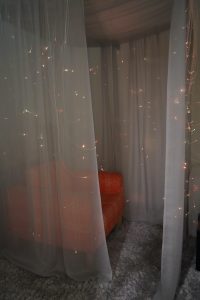
Amelia Ford
The diptych, To Love & And To Be Loved depict an intimate embrace shared between a human and their artificial partner. To Love, is a close and blurry vantage point of the embrace, one that cannot be immediately identified as human and sex doll. And To Be Loved is an external perspective of this parasocial relationship, where plastic and skin juxtapose each other.
In To Love, the perspective of the lovers is la vie en rose; once applied, a pink lens obscures reality and envelopes the bodies in a fantasy. This combination of synthetic and organic flesh homogeneously interweaves the two bodies together so that they create an illusion of intimate connection. Consequently, And To Be Loved, is a realistic representation of the human and sex doll. By emphasizing the doll’s inanimate stiffness and synthetic skin, a disturbing interference is created between the lovers; one of the bodies is not human. Likewise, the bodies of the cradleboard panels are coated in a plastic skin composed of turquoise liquid acrylic, which serves as the ground for the oil paint. These sculptural paintings invade the exterior space, mimicking the perplexing and confrontational subject matter that they depict.
To Love & And To Be Loved, disturb preconceived notions of love by intermingling reality and artifice. I encourage this disturbance by translating empathy through internal and external perspectives of intimacy. By visualizing the experience of a parasocial relationship through the perspective of the human partner, To Love offers its audience an opportunity to see love in the eye of the beholder. Adversely, the doll’s absence of sentience and autonomy in And To Be Loved reveals an outsider’s perspective. Considering both vantage points, To Love and And To Be Loved question the legitimacy of fantasy, the objectification of bodies, and the necessity of love.
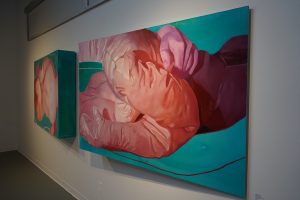

Ari Sparks
Dismemorialization
Dismemorialization is a body of work that conjures up the manifestation of trauma as a disturbance or glitch through haunted images of memories. In my paintings, I alter photographs of my childhood self, using analogue manipulation on a flatbed scanner and digital photo collage. The resulting warped photo references are the basis for my paintings. The viewer experiences these images of my younger self through a lens that expresses the trauma that occurred during this period of my life as a distortion. In essence, the psychological and emotional trauma that haunts the subject is conjured and given visual language within these paintings.
The paintings depict warped and twisted versions of myself in bright contrasting colours. This creates an underlying conflict within the colour theory and energetic vibrations through the juxtaposition of opposing hues. By using unrealistic colours I intentionally open up the interpretation of the work to be depicting something intangible.
Through my methodology, Dismemorialization interacts with the history of image making and representation through various technologies: photography, performative and digital interferences of the image, and oil painting. The performance of the image refers to my body physically moving the photograph as it is digitally scanned, thus influencing the photograph’s appearance.
The use of myself, a queer person, as the subject of my paintings necessitates readings of the work to include queer identity and fluidity. This builds upon my previous figurative work that explores the relationship between queerness and themes of horror, monstrosity, and haunting. Specifically in this context, I am using depictions of my queer body as a site of exploration through which human beings experience and enact identity, the abject, eroticism, horror, and death.
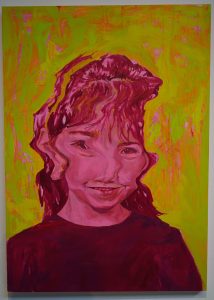
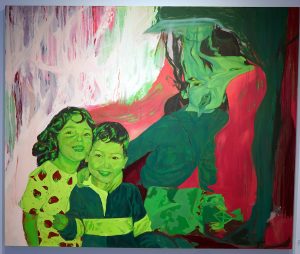
Arianna Tooke
Hydelidae, is a visual allegory for the dangers of nostalgia in excess. The consequences of this indulgence are presented as stasis and destruction. The work consists of an interactive projector display; a structure based on the Swedish malaise trap; and metamorphosis imagery of the Superfamily Hydelidae, American moth-butterflies.
My research for this work focused on David Berry’s book, On Nostalgia, which discusses the aforementioned concept of stasis. Berry cautions against the desire to return to the past, which would, “effectively stop the whole business of living, cryogenically preserving some iteration of yourself without even the promise of thawing it out.” The caterpillar serves as a foil to this idea: it enters a frozen, liminal state with the intent of completely altering its anatomy, fully departing from its youth. Hydelidae asks, “Does a butterfly yearn to be a caterpillar again? What would happen if it could be?”
A sculptural tableau invites the viewer into a surreal world through the interplay of my childhood memories and my current imagination. The scene, encapsulated in netting, is at once whimsical and ominous. Branches emerge from the gallery wall, suggesting a history of abundance and overgrowth. The gray papier-mâché bark and absent foliage, however, tell a different story. The branches are fossilized. The infestation of caterpillars with gaping, toothy mouths further contextualizes the narrative. The caterpillars maintain their adolescent state, engage in indulgent consumption, until their host tree is barren. The caterpillars must metamorphize to maintain balance in their life cycle: the very leaves they eat are the same that camouflage the chrysalis and shelter new eggs.
Acetate cutouts on an overhead projector depict characters, furniture and objects for the viewers to rearrange. The images, cast onto a net, invite reflection on the material components of nostalgia. We maintain archives of monuments to youth and vitality. We revisit our former selves through keepsakes when the weight of aging is too heavy. We may even ignore the consequences when these preservation methods delay the inevitable decay that is essential to the life cycle.
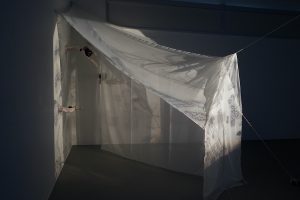
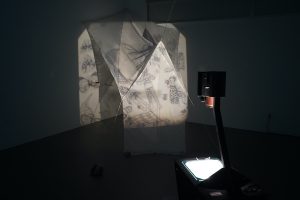
Ashley Desjarlais
Half- Treed! How I Learned to love the Word
This is a poplar tree, native to Kelowna and Manitoba Red River region, it signifies my one and only home’s roots and my unknown genealogical home roots melded together. This tree was a windfall that was gathered with my siblings, on crown land. The tree was removed with the intent of not harming the ecosystem it came from, but to be repurposed to encourage a discussion on displaced identity.
The three pieces of tree each regard a different aspect of identity. Our unconscious identity formed through habits and their disregarded physical traces. Our genealogical identity that is imposed upon us for our own benefit and disadvantage. The conscious identity and what we actively choose to participate and display as our persona. In coherence together the viewer of the is offered the opportunity to consider the aspects that form their own identity and what identity may mean to them and others in their life.
Identity poses duality between what is and what could be, it is our past work in the present and our future ambitions in fruition. Unconsciously my habits’ physical traces create an anonymous physical identity of me. Genealogically my identity highlights how assimilation blurs identity leaving a generation of young metis questioning who they are, where their culture is in the media, how their traditions and cultures have any relevance in the modern day. Consciously my identity creates a space for both reconciliation and assimilation of who I have been and who I can be.
The setting of the tree also affects how the poplar tree is experienced and the energy it projects. While in nature this tree had fallen, lost its place and had to find solace in the land, in the gallery it is displaced and feels unnatural creating the contrast of our own identities. Identity poses a huge question while being a Métis person who presents white. Should I be what people see in quiet discomfort or should I be who I am in constant tireless explanation and discomfort for others ignorance. This tree projects this discomfort and vulnerability it takes to be a modern Métis person.
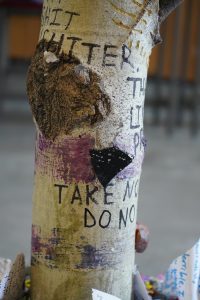
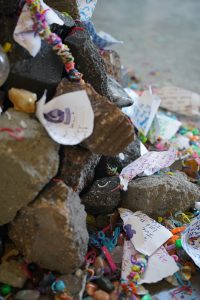
Avery Ullyot-Comrie
EXPRESS CHECKOUT 15 ITEMS OR LESS!CARTE BLANCHE
My work is conceptually grounded in minimalist principles focusing on elements of form, repetition, and colour. Using shopping baskets and shopping carts as found objects, the installations recontextualize the items by inserting them into the gallery space in repeating structures and mass quantities, while also utilising various physical interventions. I chose to work with the shopping basket and the shopping cart because they serve as consumer tools, recognisable even outside of their normal placement. The formation of the found objects and their modifications invite the viewer to consider their previously held relationship to the items in the installation.
Both objects serve the single purpose of carrying goods which is disrupted through physical interventions such as barriers, placement in the space, and cross-sectioning. The shopping baskets are hung in a series of lines adhered by their base, each covered with an acrylic sheet that acts as a barrier between the basket and its ability to carry goods. The barrier and configuration on the wall disrupt the relationship between the viewer and the object by challenging its purpose, thereby reducing the object to its formal qualities. Similarly, the shopping carts are cross-sectioned and placed on the gallery floor, creating an illusionary effect as they recede into the surface, inhibiting their ability to fulfil their purpose and minimising the object to its form. Colour acts to unify the shopping carts and baskets to draw attention to the repetition within their grid pattern configuration.
The quantity of the objects is intentional as it creates an awareness of mass as the carts and baskets are spread apart, deviating from their known ability to nest into one another. The installations use found objects from consumer environments, allowing the viewer to connect with the installation materially and reflect on their relationship to the items displayed. As objects created to fulfil a single purpose, their existence is challenged by this recontextualisation that inhibits their ability to assist in consumption, reducing them to their formal aspects.
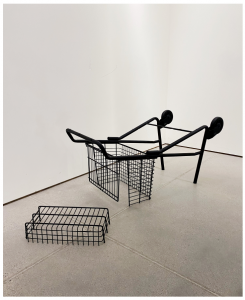
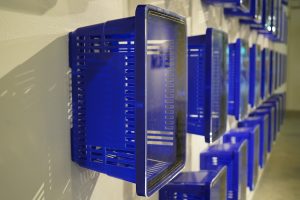
Candice Hughes
The progression of my practice has been shifting significantly over the past year. Reflection on process and the importance of methodologies have brought about an introspection towards process-based creativity. My artistic practice results from experiencing a meditative release from the stress of the world around me. Creating and exploring different technical applications of paint has progressed my work towards abstract expressionism. Within this framework, I am interested in how the viewer experiences my work. I am mindful of the relationship between creating and experiencing. Our experiences and journey through life shape the lenses through which we interpret our surroundings, and with my work, I seek to provoke a unique response within those engaging with my paintings.
The mirroring position of the dual canvases enhances disorientation. By removing a cohesive singular image within the canvas, the potential for different interpretations emerges. Using meticulously placed strokes, layered up to reflect layers of life and the complexity of humanity and our individual experiences, I investigate the interaction of colour, shape and linework. The individual strokes are insignificant, but when placed next to thousands, when stepping back and viewing each in relation to the whole, it is part of a much broader, complex network of being, similar to the shifting experiences of life.
Each painting works to engage the viewer as they feel, see, and experience the movement of color and the subtlety of hidden shapes and images. This allows my paintings to provoke and pull out a sense of introspection and reflection.

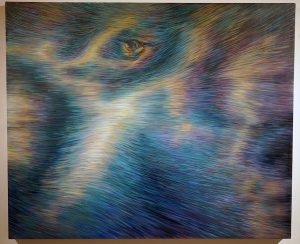
Carla Mather
CANSOFCOM (Biometric Command Centre HUD)
Carla Mather is a Dawson City, Yukon based mixed reality designer taking Computer Science and Media Studies at UBC Okanagan. Her capstone project was a partnership with the Canadian Special Operations Forces (CANSOFCOM). The project is an adaptive interface for the Hololens, that visualizes complex live health information derived from users’ biodata. The full project will use multiple biometric health sensors integrated into an interactive Heads-up (HUD) display. This HUD will allow the user to understand vital body information better and help respond to the user’s needs during critical moments. This HUD research is an important initiative to ensure critical information is presented in an accessible way. For the CANSOFCOM project, Carla built an interface the user can interact with, where the user can graphically see-through 3D holograms, which form a central command centre. Designing applications for the Hololens 2 in 3D means thinking outside the box and focusing on new ways to display information in a simple and easy to use format, while still staying inside the limitations of the Hololens 2 hardware specifications. The future of this technology is promising but it still requires more development before it’s truly ready for use in the field.
Carla also has gained valuable experience during her time at UBC building 3D environments in the Unity gaming engine. The projects she has worked on to help her understand 3D environments are “Waterways”, an interactive exhibition first hosted at the Kelowna Heritage Museum and developed by Dr. Aleksandra Dulic. She also developed “Tombstone – The experience” a VR interactive open world showcasing the aurora borealis, camping, and animals.
Carla sees and believes in the potential in mixed reality becoming the next big tech that will take over the work environment. She is focused on continuing to develop her skills on building mixed reality applications and plans on continuing her education to complete her Masters in immersive technologies through the “CREATE Immersive Technologies’ program after she finishes her undergraduate degree in computer science in 2023.

Carly Sivasankar
Currently, my work has been focused on mental health and the different ways that it can present itself within daily life. By making work that can be related to by most who view it while also having a personal meaning for myself that doesn’t make me feel too exposed and vulnerable. This year I am predominantly focused on the need for routine along with an inherent need to have things be the same day in and day out.
For myself, with my ADHD I have to do things in a very certain way and if it is out of order my day becomes filled with uncertainty/anxiety. This is something I have put a lot of research into, the effects that ADHD can have on someone’s day to day life/ those struggles.
By using the shape of the gummy bear it can become a ‘vehicle’ of sorts for either medicine, drugs, playfulness. Really anything you can relate it to. In my experience, the bear shape is one that I had hyper fixated on when I was a child. Before I even was diagnosed with ADHD; the hyper fixation of this shape just kept fascinating me, I would stretch them until they would snap back to their original shape, ever pushing the limits of how far I could stretch them before they deformed or inevitably broke.
Looking back on it I was very violent with them, which could be linked to my frustrations of not understanding how I was feeling or why I was feeling that way in particular because I didn’t understand what was happening in my brain other than these impulsive hyper fixation thoughts. Overall I am trying to make work that is cathartic for me and shows the need for order and organization, along with a need to collect the same things. While also linking it through the method of display to mental health.
I want my work to express a meaning that is easily accessible at a glance but then can be deciphered on a deeper level when it is observed for a longer period of time.


Danielka Chretien
My final body of work consists of four 20×24 inch lino cut prints depicting animal imagery associated with nightmares. I chose these images to create a visual representation of what it feels like from my perspective in regards to battling and living with mental illness. The series begins with a black lone-wolf, can be seen as a representation of shadow work which can bring attention to negative thinking and behaviours. Lore says that if one sees a lone black wolf that the message is to face ones darker side in order to heal. The black wolf consumes the composition of the frame and has an aggressive facial recognition. The second print depicts a falling owl, knocked out of the sky and defeated. An owl even though majestic, is said to be considered a bad omen if heard outside one window at night. The meaning has often been interpreted as a symbolic meaning for a messenger of death, some Indigenous peoples; i.e. Navajo and Apache, traditions take the sight of an owl very seriously. The third print is of a pin-up woman wearing fantasied plague doctors regalia conquering and taking control of a raven. The Raven alone holds many different symbols and connotations all on its own. I feel it is one of the most common ‘nightmare-ish’ animals that is easily relatable for viewers to interpret. The image shows the rider and the Raven flying through a clearing of clouds where a new moon is visible in the night sky, another symbol of new beginnings and hope. This image is of myself, taking control of my mental illness and moving forward, together, into the next chapter of my life(Medicine). The fourth and final Image of the series is of myself at peace and harmony with my mental illness, in coexistence. Mental illness never goes away, but it can be controlled with different methods. It is all about finding the right balance on needs to be stable and harmonious in every way. I chose to bring forth imagery in relation to mental illness in attempts to bring viewers more aware of the stigma surrounding the topic. Maybe the jarring imagery and visualizations may bring a different perspective on what it is like living with a mental illness.

Emmah Farrell
My intention behind Duality is to visually communicate memories which are tied to various places, through corresponding depictions of landscapes and subjects. When recalling the past, certain sounds and items have a direct association with specific and clear memories. Individuals tend to remember certain aspects of memories by recalling the people they were with, the things they saw, and the characteristics of the location. No matter the combination, people recall memories in unique ways.
This piece takes shape in three separate animations, which are focused on places that have significant value in my life. The animation, which is both visually and thematically the center of my work, depicts a series of landscapes that are all uniquely connected; they each evoke a sense of belonging for me. The second animation presents people and is designed to highlight the individuals that I have shared these memories with. The third animation illustrates the elements that were in the space when I was there, which have been imprinted on me and characterized the place. The association between the three animations is left intentionally ambiguous so as to allow independent conclusions to be drawn on the relationships as well as to encourage individuals to connect their own memories to the scene.
Through this collection of interconnected animations, I examine the fragmentation of the ways memories can be recalled. The physical separation of objects, places, and people into their respective frames allows for a concrete display of the differing ways a memory can be sparked. Together, the combination of the three animations strengthens my memory of specific moments of significance in my life. Those that do not share my experiences will not immediately be able to understand the associations that I have made, but they will be able to recall their own memories and make their own unique connections independently.

Fiona Firby
‘RAPACITY’
I have been passionate about film and movies for as long as I can remember- always fascinated by how a moment can be captured, rewatched, and manipulated. The nonlinear and interactive film project, entitled RAPACITY focuses on temptations of greed. The project uses a choose your own adventure as a device not only to communicate the message but also to engage the viewer further in choosing their own path. Viewers will be able to go through multiple scenarios which will lead the protagonist to experience alternative outcomes. The interaction within the film narrative will depict either a lonely, isolated life; or they will be successful leading to a full life where the character does not overindulge with their wishes.
Through my time in the Media Studies program here at UBCO, I have furthered my expertise in filmmaking, creative coding, graphic design, and interactive media. This project was created for my media studies capstone class and is a culmination of all of the skills and interests I have developed through this program. Throughout my degree, I have been given the opportunity to expand on my prior interests such as film and further explore other creative mediums and methods. One of the new interests that I discovered through my time at UBCO was interactive media and design. Through this project, I have been able to combine my main focus and passion for videography with my new interest in interactivity; leaving my final footprint at UBC with my two passions.
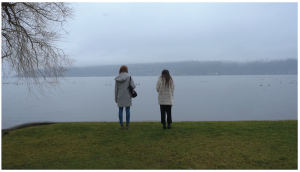
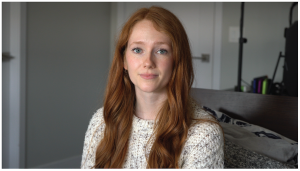
Hanna Hamaguchi
I have always been fascinated with the way we learn and navigate through digital spaces and the various digital specific interactions that we can have online.The development of concepts such as controlled anonymity, access to a hivemind of sorts, and various malicious exploits are some of the things I find interesting about the digital realm. I wanted to make a series of work highlighting the category of malicious exploits on the internet and explored various computer viruses. These viruses are created with malicious intent, and they navigate a space that the average person knows little about and parasitically use us for things such as our personal data and advertisement profit. I also find the way they evolve interesting as public knowledge of these types of malicious actions become common sense and these programs must adjust in order to hide themselves from our detection.
Screenprinting allows me to recontextualize these visual elements that often exist purely on digital screens. I enjoy the process of deconstructing these visual elements that make up the peripheral of our digital experience and using a very physical process like screenprinting to make a final image. I find the permanence of the physical object contrasts the ever changing nature of the digital space and I enjoy the interesting dynamic it creates when we see an object that was purely meant for a digital space represented in a physical space.
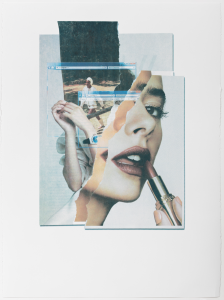

HongYu Zhou
Nice To Meet You- 路过人间
In March 2020, COVID-19 rapidly spread around the world and significantly changed people’s lives. Since the outbreak of the coronavirus, I have been doing street photography portraits to explore the changes in human life. This series of photographs documents four phases of the pandemic: two series based on the early days of the outbreak, the lockdown and passport period, and a final series about Omicron.
My process involved randomly choosing people on the street and then introducing myself to them. After sharing with them that I’m a visual arts student at UBC Okanagan and the details of my project, several agreed to allow me to take photographs of them and answer some questions. I wanted to hear about what strangers had to say about COVID-19 and the challenges they have faced during the pandemic. I tried to capture their expressions and emotions as they spoke to me, and for this last series on Omicron, audio recordings of their voices which are genuine expressions of their opinions and feelings. In the process, you will hear strangers discuss how COVID-19 has changed their lives and affected them. Some people have lost the opportunity to meet with their close friends because of the pandemic, and some have lost many job opportunities. However, most tragically, some have lost their beloved family members.
As an international student, I felt welcomed by the local citizens, who were friendly and kindly agreed to participate in my project which made my heart feel warm. I want to express my appreciation to these strangers for their generosity. Although the Omicron virus is scary, I still believe that someday humans will overcome COVID-19 and resume normal life.
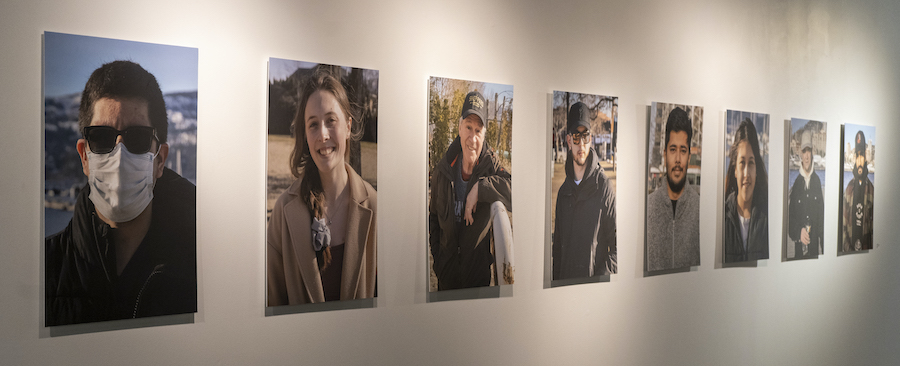
Jayko Duan and Owen Wong
Flight Data Systems Rebranding Package
The Flight Data Systems rebranding package is a comprehensive package of elements created to revitalize the brand and public facing image of international avionics and instrument manufacturer, Flight Data Systems. With input and feedback from Kelowna based aviation company SKYTRAC Systems’ marketing team, we created what we felt would best represent and embody the company’s brand and what it brought to the international market. This included a new logo, branding guidelines, website landing page, business cards, letterhead, presentation template, and product spreadsheet templates. The exhibition documents our entire working process, covering every step taken to get to the final product. This includes sketches, works in progress, ideas left on the cutting room floor, and explanations regarding the choices made throughout the process.
The creative process of projects like this are often left unseen, and usually involve many hours of dedication and creative thought. The final product that is presented can seem deceptively simple, with only the logo gaining the majority of public attention. This exhibition provides an interesting look into everything that went into the creation of a rebranding package and all the creative decisions behind it. A great deal of thought goes into seemingly mundane details like colour palettes or the spacing in between individual letters.
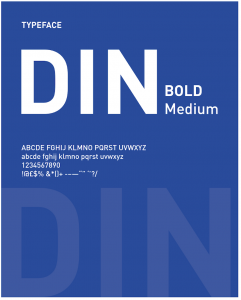
Jordan Sterling Pike
Icarus
“Icarus” is a project seeking to immerse the participants in an alternate reality version of Crete, Greece, within a science fiction dystopia where VR headsets are more common than houseplants, gods walk amongst the mortals, and everyone is very, very queer. This interactive art piece is in opposition to the idea that video games can’t be art, posited by famous critic Roger Ebert, and reinforced by AAA game companies cranking out heartless, addictive games solely for profit. Any medium for the expression of ideas is an artform, and video games can merge together many artforms in an attempt to sculpt an interactive experience.
Mythology and folk tales are not concrete things with a single source to point back to. Really they’re winding paths through history where the stories change shape and function over time. Some of the characters, like the titular Icarus, are reimagined as queer in this tale, while the rest of the characters represent the queerness that was already attributed to them in many ancient texts, only to later be modified under a monotheistic lense. You could call this “straight washing”.
My desire in this project was to bring queer characters from ancient Grecian mythology to the forefront, reminding participants that queerness is not, in fact, a new concept of the modern age, but instead an always-existing group that history has just attempted to blot out. I invite the player to follow along with the interactive, non-linear storyline of Icarus to get to the bottom of the mysteries of the Island of Crete, where they will discover a colourful cast of queer characters that are stuck in a world devoid of the nature that unconsciously sustains us all.
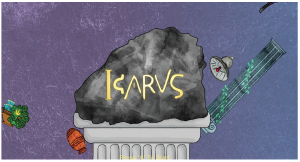
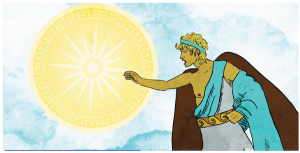
Karen Takahashi
Jam Session is an interactive, audio-reactive media installation featuring a projection of text and two directional microphones, into which the viewers must create sounds in order to see the text. My work explores the principles of listening, improvisation, and collaboration in Jazz and tap dance. It combines visual perception and interactivity to encourage the viewers to meditate on the act of listening in their daily life.
The act of ‘listening’ is an integral component of Jazz and tap dance, especially in a collaborative, jam session setting. Ingrid Monson explains that, in Jazz, having “big ears” means to be “equipped to hear and engage in complexity as it happens,” and by listening closely, musicians can “respond to and participate in an ongoing flow of musical action that can change or surprise them at any moment.” This collaborative process and ‘listening’ in Jazz nurtures empathy between the musicians and facilitates their ability to respond creatively to the unexpected. Growing up tap dancing and listening to Jazz has helped me navigate the unfamiliar and adapt to challenging situations with flexibility and curiosity.
Jam Session invites the viewers to make sounds into the two microphones to trigger a message to display on the projection. One microphone is positioned at foot level to pick up stomping sounds, triggering a light-gray foreground projection to fade out and reveal the message “LISTEN TO” followed by a noun or pronoun. The second microphone is positioned at chest level to pick up clapping sounds which cause the words after “LISTEN TO…” to change. Like in Jazz, this work may be activated by either a sole participant or engender collaboration and flow of intuitive communication between more than one person through playful sound-making.
The Jazz principles of listening and collaboration can be applied as a conciliatory method in today’s socio-political conversations, social attitudes and interpersonal relationships, where divides and conflicts are born and prolonged out of ignorance and absence of listening. The Jazz way of listening makes way for curiosity instead of disregard, innovation instead of retrogression, and embrace instead of rejection.
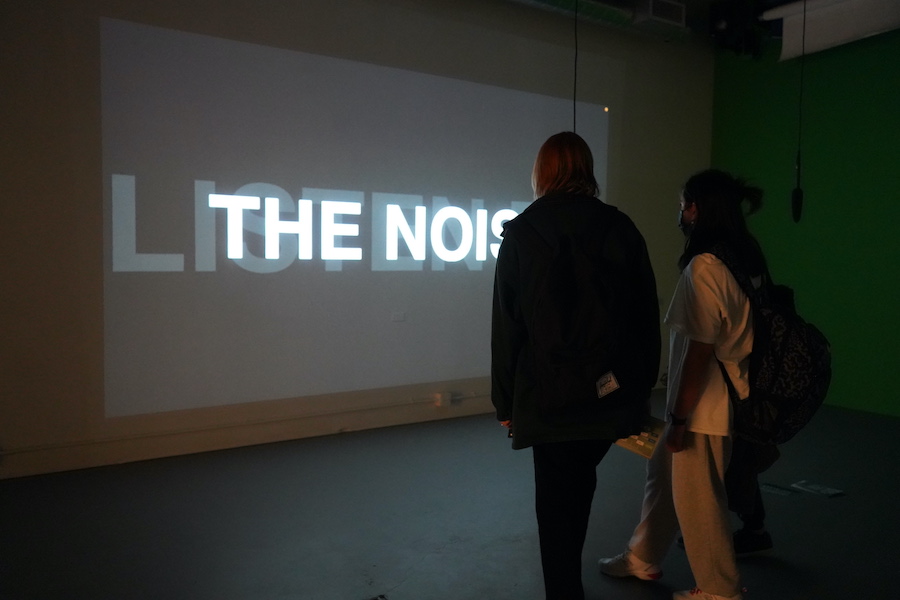
Lark Spartin
Distant Distraction, Foul Breach, Separate Sensation
Lark Spartin is a Kelowna, BC based digital media artist. This triptych video projection and augmented reality piece explores the evolution of self as mediated by technology, expanding upon the proverb of see no evil, hear no evil and speak no evil. Each of the three projected posters manipulates a facial body part to refer to a perceived disembodiment that occurs in our digital interactions.
These interactive AR images are available through scanning the video projection, and directly remark on the social media platforms used to view them. Viewers can witness animated hands reaching out towards them, as if reaching out for connection. When individuals flip to the front camera, a textured mask filter covers their face, promoting ideas of disembodied spectatorship. By presenting the AR filters within popular social media platforms, the viewer is invited to reflect upon the problematic values that have arisen from the use of social media, and consciously recognize what it means to ‘reach out’ for authentic connection. The way the AR is used currently, mostly through the use of filters integrated into social media to morph users’ faces and beyond, amplifies these platforms’ inherent superficiality and has significant effects on individuals’ perceptions of themselves and others. This work aims to invert AR’s typical use and confront these entrenched norms of severe social separation. By exploiting and subverting technology that is used to quite literally filter how we relate to our world, ourselves and one another, this project emphasizes the creative and relational potential of the tools we use daily.
Through taking social relations and their technological mediation as its subject matter, this artwork reveals the effects of the mediating technology that we use and reflects on the role we all have in reshaping it. Through intentional use and understanding of the social structures that it can promote, the commodifying and disembodying effects of our technology can be resisted and deconstructed to shape these platforms as tools for embodiment, expression, connection and relationality.
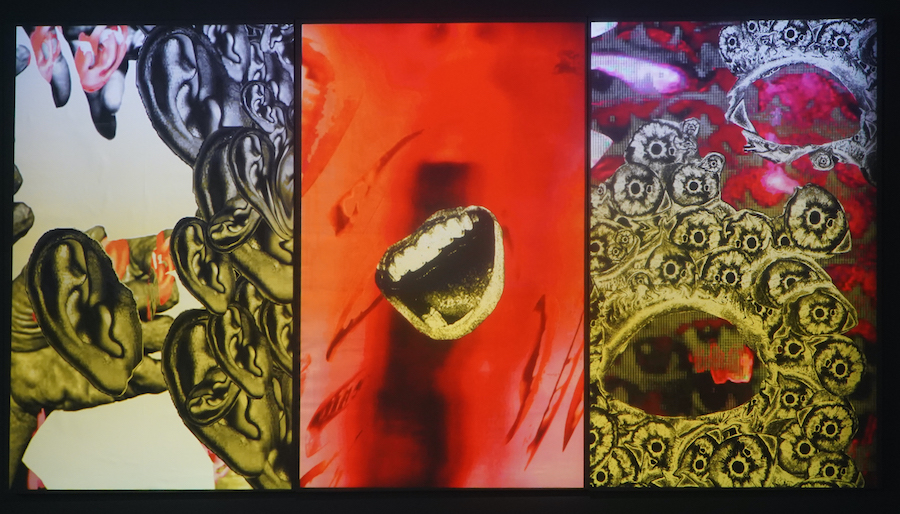
Leah Woodin
Hedley, Personally Historic.
Hedley, Personally Historic is a tribute to my family roots based in the mining town of Hedley in the Similkameen Valley, B.C. The archival photographs, my own photographs, and museum-like displays in this installation are not old educational, but they are also personal.
Through the process of one-on-one family interviews and scouring the B.C. Regional Digitized History collection, I examined the history of Hedley which is omitted in the collage of photographs that cover two sides of each of the three plinths. These images consist of decades of documentation, as well as highlight more recent development in Hedley. Upon closer inspection, one can see the history that is now being remembered. The photographs include the cenotaph that is set in the center of town to commemorate the seventeen men who signed up for WWI. In the upper cases are soil, moss, branches, creek water and rocks that I excavated from various sites of Hedley. These items evoke childhood memories and a sense of belonging. The backdrop in my installation is an adaptation of the Hedley town sign. With slight modifications, this sign reflects the new and rustic appeal of Hedley and my personal connection to place, family and history.
The intense research I was able to do during this process was rewarding, and another way to spend time with my grandmother and learn more about her history here with my grandfather. Not only do I feel more educated about my roots, but I am even more grateful and honored to be from this mining town.
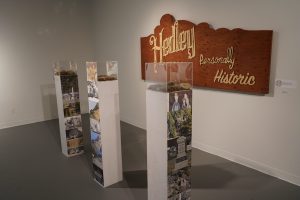
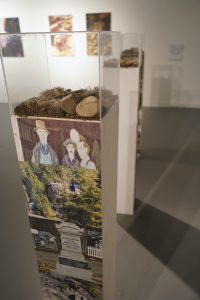
Kenzie Beeman
In Touch, 2021-2022
Rock climbing has shaped who I am as a person and as an artist. I started climbing six years ago, and my passion for the sport has continued to grow ever since. It is difficult to determine what I love more, photographing the sport or participating in the sport.
Climbing requires so much focus and attention to detail that it completely consumes you for those moments that you are on the wall. Fear is also a significant aspect of climbing and learning to overcome it is never a straight trajectory. However, there are precious moments when the fear seems to subside and the action of moving up the wall becomes pure bliss. In these moments, I feel as though I have become engulfed in the grandeur of the landscape and the gratitude for my surroundings intensifies.
I have always strived to visualize and represent climbing in unique and endearing ways by capturing the excitement of the sport, but also the more mundane moments. As much as I love hanging on the wall, being right next to the action, I also love to take a step back and create space to let the natural landscape guide the photograph. It is often at this time when I feel as though I have captured that moment of bliss.
In September 2021, I began exploring the relationship, connection, and engagement between the climber and the land. Over the past seven months, this series has taken on many different photographic journeys. Symbiotically, what lies beneath it all is the contemplation of the impact that climbers have on the land and the effect the land has on climbers. In Touch visualizes both the physical and mental changes that occur within the climber and the land. It is when I am climbing and photographing climbing that I feel truly in touch with myself and the environment around me.

Maura Tamez
Daánzho, my name is Maura Tamez. I am Ndé, and an enrolled member of the Lipan Apache Band, Southern Plains Dene, Texas. Ndé are linguistically and culturally tied to the Dene Nation in Canada, US and Mexico through land-memory. My work represents ongoing research on hadntn, the Ndé word for cattail pollen, and is informed by Ndé science, culture, and contemporary life. Ndé peoples, particularly women, hold hadntn in high regard as a medicine and food. Hadntn, found in ecosystems globally, is a primary Ndé identity plant due to how Ndé uitilize it in Ndé coming of age ceremonies for young girls. It is key to Ndé life-sustaining cultural continuity connecting us to Niguusdzán (land mother/north america).
The presence of cattail in my work is manifested as raw materials I’m giving shape to using aluminum to make sculpture. In Hadntn Still, the aluminum’s malleability is a quality I’ve adapted to create new forms. These aluminum shapes echo the grace and movement of cattail during harvesting processes I’ve experienced in numerous Ndé community harvesting-processing activities over my lifetime. Similarly Land Tampon, made with hadntn, mimics the form of a current-day menstruation product. Maxi Pad Lightbox is a piece that uses light to draw the eye to intricate interlacing of cattail fibers after being cooked down. In my fiber-related research with Indigenous artists (Barb Marchand, Mariel Belanger), I have learned how to cook cattail. The cattail plant has emmenagogue qualities; it could stimulate menstruation in bodies with ovaries. Other medicinal traits (i.e. being mildly diuretic and hemostatic) are further evidence of the plant’s capabilities.
As an invited guest who has harvested hadntn in Syilx territory and Secwepemc territory, this work is informed by my reflections on my relationships and roles as a guest in other Indigenous Peoples’ lands where a Ndé culturally significant plant thrives. This highlights parallels and intersections between diverse Indigenous harvesting practices in marshes outside my traditional territory, and amplifies knowledge of my Ndé Elders and mentors. Shaping hadntn stories and knowledge through sculpture energizes Ndé knowledge in current-time and for future Ndé peoples’ navigating oppression.

Miah Shull Olmsted
Becoming a Good Ancestor
As a creative researcher, I’ve spent 45 years exploring the world using scientific, emotional, spiritual, and artistic lenses. This includes understanding my physical DNA which carries the evidence of ancestral reciprocity with land and water. It includes exploring the transmission of emotional DNA, passed through intergenerational trauma, accelerated, and intensified as we collectively experience social turmoil and environmental trauma. How does this change me or the rights and responsibilities I have to people, objects, land, and rituals?
I’ve been coming to terms with what it means to become a good matriarch in a strong, healthy way by using a co-creative process known as Community-Based Participatory Research, research that is with and for communities. I address issues as a partner, inside my community, leading to the restoration of local perspectives, action, and positive change (Coughlin et al., 2017). Similar approaches exist in both theory and praxis in “theatre of the oppressed, participatory video, feminist research, Indigenous-centered research and solidarity learning” (Gutberlet et al., 2014). How do I use my art to exchange knowledge with others?
The generations of women in my community have relayed important place-based histories through action, teaching, and storytelling. Yet, much of the environmental information, land-based knowledge, and cultural traditions have not been valued within our family. This trapped wisdom keeps us bound in darkness.
I use performance, ceremony, and storytelling to practice the Indigenous methodology of “relational accountability” (Wilson, 2001), emphasizing connections to land, water, family, community, and cultural preservation. Developing a one-woman show within this context creates a shared participatory experience, culminating with a Passover Seder. The Seder dinner is a ritual celebrating escape from bondage.
Through my work, I publicly affirm that as I graduate from university, I accept the knowledge and the responsibility to be guided by the light, the universal spirit. I practice what my Jewish heritage calls Tikkun Olam – repairing the world. I choose collective action for future choices, guided by regenerative and reciprocal relationships. This is how we honour our ancestors. This is how I nurture a brighter future. This is the role of a healthy Matriarch.
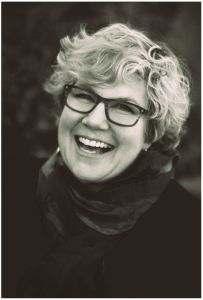

Neima Mehrrostami
My name is Neima Mehrrostami, I am a fourth year Bachelor of media studies student and I will be graduating in the year 2022. My focus is on 3D stylized animation in the horror genre. My fascination with early animation and the analog medium has resulted in exploration in analog horror in my art. I developed the “Mariana Corporation: Multi Home Video Screen Animation Test 02” from this fascination. It is an analog horror short using early animation techniques and methods to create a feeling of horror and dread. This project is important because it explores the idea of isolation, trauma and death through an abstract form.
My desire to explore these ideas through an abstract form of early Computer Generated Animation is because these ideas to me are quite abstract and through this method I hope to create a better understanding of these ideas.
I used ancient religious symbolism of the Aztec Empire through their representation of the death of the xolot. The combination of a somewhat cute creature with an undertone of death I feel is important in exploring my ideas. I used the slow degradation of the rooms as a representation of repressed childhood trauma resurfacing as an adult. The slow degradation of the room comes from my personal experience with trauma and memory, that traumatic memories can discuss themselves, but the trauma will always be there. You just need to go down a level or two which is what the door represents in my film. The end of the film I go fully abstract and explore the idea of trauma and abuse of other people and how these people are not alone in their trauma but also how this anger and resentment towards the source of this trauma can lead to violence.
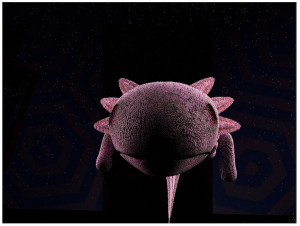
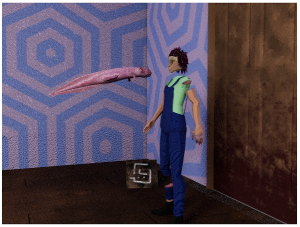
Saki Irie
My work merges projection mapping with a large-scale relief of a swan created from origami. The swan in flight symbolizes my experiences as a student, the difficulties, efforts, successes, and setbacks that the swan has guided me through, and my departure as I look towards my future. The swan, comprised of five hundred origami triangles, represents the connections and precious times I made in the past. These triangles come in a variety of sizes, which show the individuality of each human beings and the colourful paints on the pure white swan represent experiences I have gone through and eventually the lines intertwine to become a whole swan.
The large swan installed on the wall and its fusion with the projection mapping is intended to create an environment where the audience can become one with the work. I hope that everyone who encounters this work will be able to relate to it and become immersed by it. Human beings are a combination of countless encounters, experiences, hardships, and successes, and can never be expressed in a single word. Even if the finished product is not in a perfect shape or has a different color from others, your experiences and efforts will continue to accumulate and will never disappear. All these precious times that the swan has guided me through are irreplaceable, and I am formed from them now.
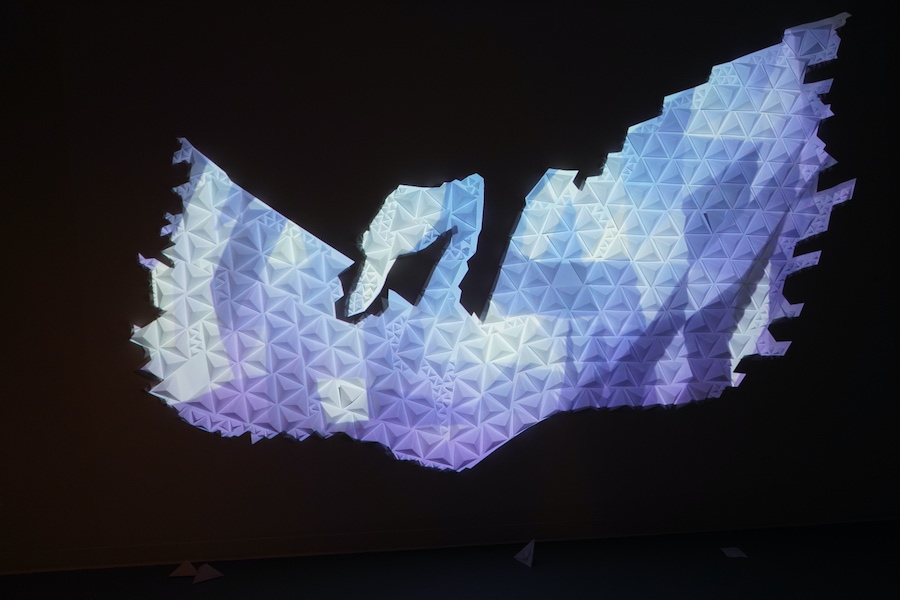
Sofie Lovelady
In my work, I express critical views on social issues, with a focus on feminist perspectives. I am interested in the ways women are represented in popular culture and media, and how those materials can be manipulated to critique the flaws in their original contexts. My practice revolves around collage and the reconfiguration of magazine advertisements, song lyrics, and public messages to create new, provocative, or prodding statements.
By recontextualizing and ridiculing the original source material, the processes of both collage and print act as an exercise of reforming the ideas present in past representations.
The work Girl Talk consists of a long list of complimentary and insulting descriptions that are often directed toward women. This expresses the familiar bombardment of the labelling and intrusion on women and their bodies through the use of demeaning language. The large scale of the prints stresses that these terms and judgements are never-ending, overwhelming, and a part of something larger than you or your control.
The collage work, Biting My Tongue, expresses the displeasure of holding back thoughts and feelings for the sake of someone else’s convenience. The figure sits before the meal of a tongue to convey how physically repulsive it can feel to hold back words that should be said.
Altogether, my work is an amalgamation of personal experiences that I aim to relate to broader social narratives. One statement by Wangechi Mutu that has materialized itself in my work is that “Females carry the marks, language and nuances of their culture more than [others]. Anything that is desired or despised is always placed on the female body”. This hypocrisy of women being both exploited and shamed for the objectification of their bodies is extremely prevalent in popular media, and is ultimately what I aim to deconstruct through the altering of said media.

Susan Protsack
Deposition I: “The Bridge”
These amorphic sculptures, that are positioned in a darkened environment, are intended to evoke the generation of memories and emotions. Music, commissioned for this installation; as well as directed and ambient lighting, enhance the multisensory experience. While the work holds personal and layered significance for me, the intention is that it will create an experience that is open to the unique interpretation of each viewer.
The forms were created using an original, iterative technique, in which fine mesh is gradually encased in multiple layers of compound, eventually producing a solid form from what was once completely malleable. The flexibility of the underlying mesh, and the unpredictable ways in which it settles into its own form makes it impossible for me to envision the final work until it is well underway. I am fascinated and compelled by this process, whereby the work slowly and autonomously seems to reveal itself, progressively generating its own spirit and being.
The process involved in the creation of these works is analogous to my personal experience with the neurological condition, aphantasia. This condition, affecting 1-2% of the population, involves the inability to see images in the “mind’s eye’ and is related to other conditions like prosopagnosia (the inability to recognize faces). Someone with extreme aphantasia, if asked to visualize an object, may only be able to conjure the vague essence of a form occupying a three-dimensional space. It is often described as sensing an “aura”; perceived, yet, invisible. In addition to parallels between the creative process and aphantasia, the topographical shapes of the works also embody what I ‘see’ when I try to manifest images in my mind. Physically representing ethereal thought is an impossible undertaking; this work takes that impossibility further in its attempt to depict the absence of thought.
The music accompanying the installation, created by Andrew Stauffer and Nicholas Denton Protsack, is based upon their interpretation of the sculptural component of the installation—along with minor additions of melodic fragments or sounds I have requested be incorporated for their personal meaning and relevance to the work.


Yvette He
Dining Table
Sharing a meal is an intimate ritual for any relationship to communicate closeness. I recall my childhood memories in my work by recreating and documenting a traditional meal that symbolizes a reunion meal called 九大簋, loosely translated as a Nine-Course Banquet in English. When I was young, my mother would spend a whole day preparing this nine-course meal for the family. The meal sharing process is a part of me in a meaningful and crucial way. Through this series of photographs, recipes, a table and utensils, I seek to capture the warmth and intimacy of this ritual shared amongst family members or friends.
In this installation, my intention is to recreate the moments of sharing a meal and reflect upon the concept of nostalgia and long-lasting memories. A dining table with a Lazy Susan, resembling one that may be seen in a traditional Chinese setting, is the focal point of this work. Set upon it are chopsticks and bowls made from dried noodles and tin from food cans, which signify the philosophy of ‘long-lasting objects’. On the wall is a photograph where I am seen preparing a meal with familiar ingredients surrounding me. And just below it, a shelf with cans of food which correspond with the table setting. Symbolically, the audience members are my guests, who are invited into this meal sharing process by taking home copies of recipes of classic Chinese traditional dishes printed in both Chinese and English.
The dining table is where people come together and memories are made. I hope to encourage the audience to consider their own rituals around sharing a meal as they explore my installation.
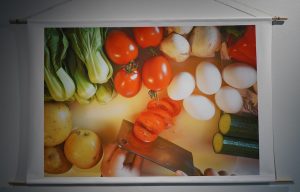
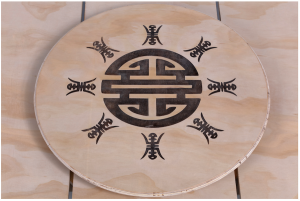
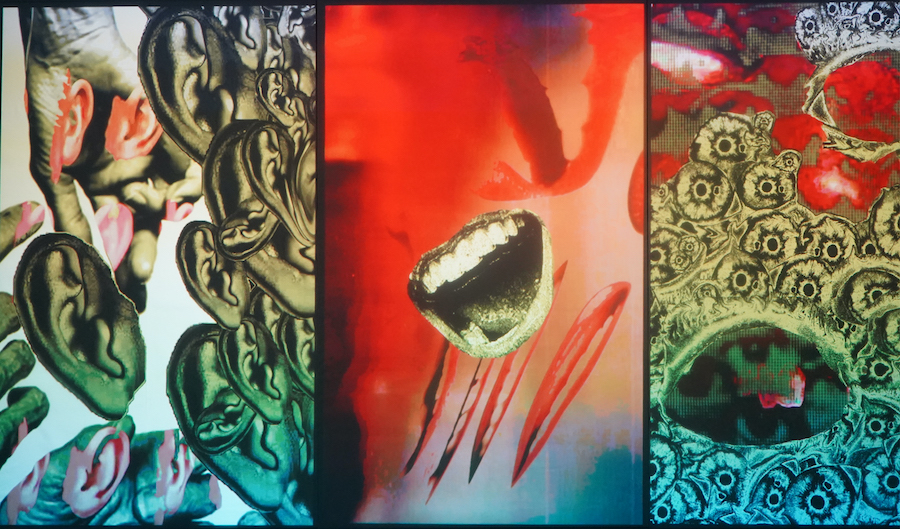
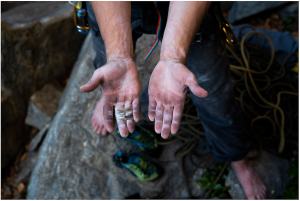
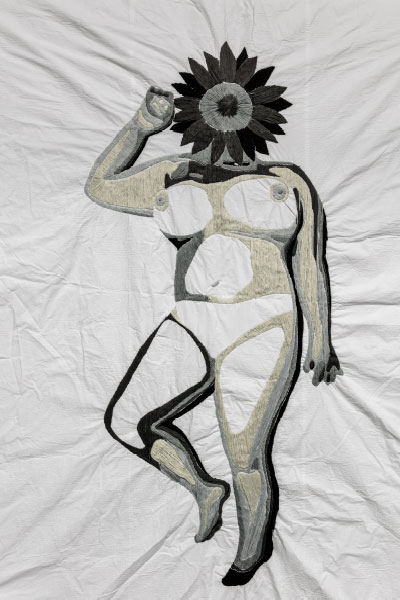
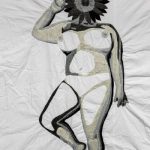


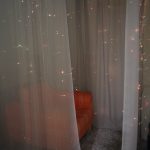


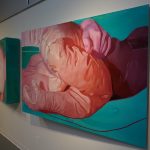
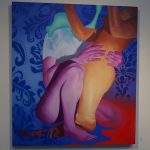
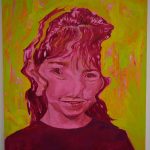
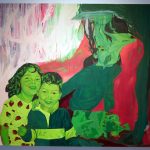
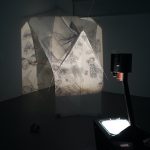

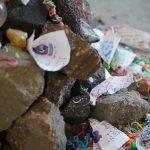


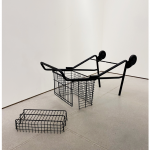


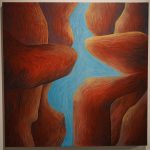

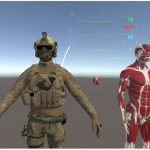



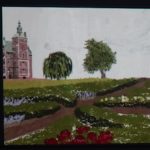


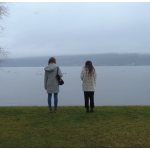
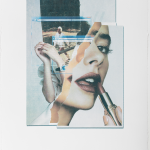
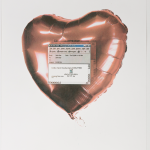

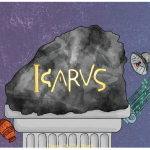
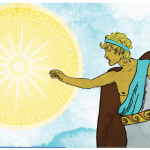

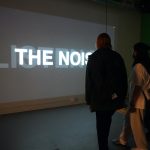
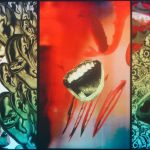


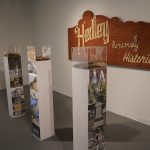
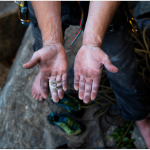
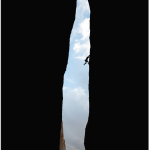


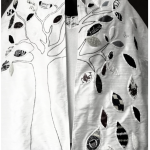
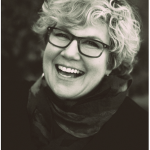

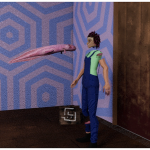
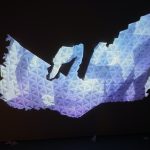
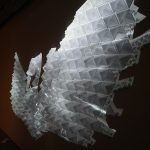
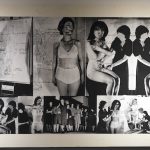
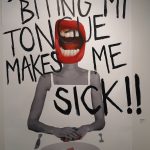
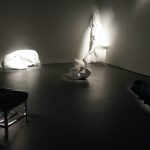
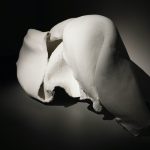


 Follow
Follow